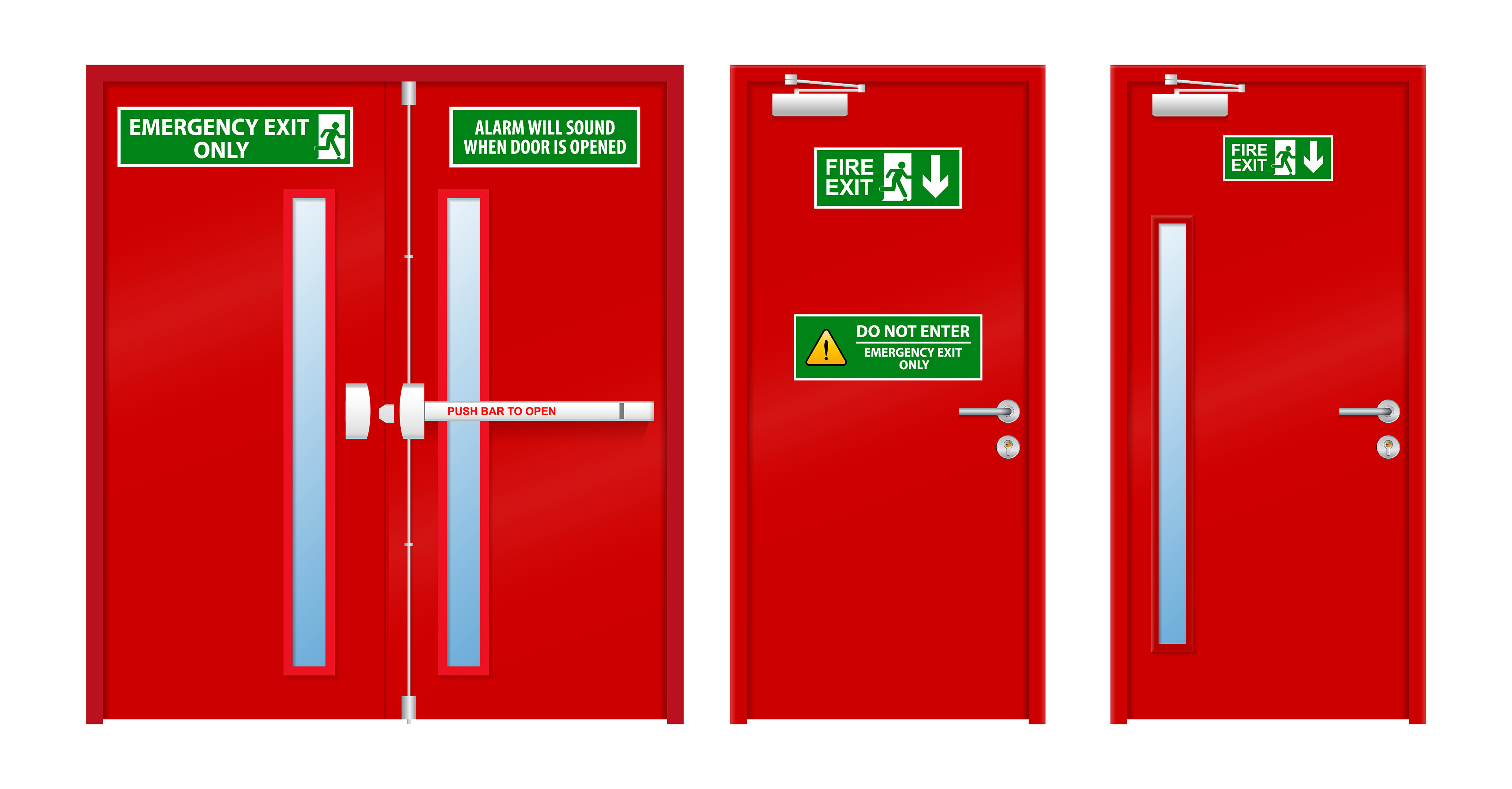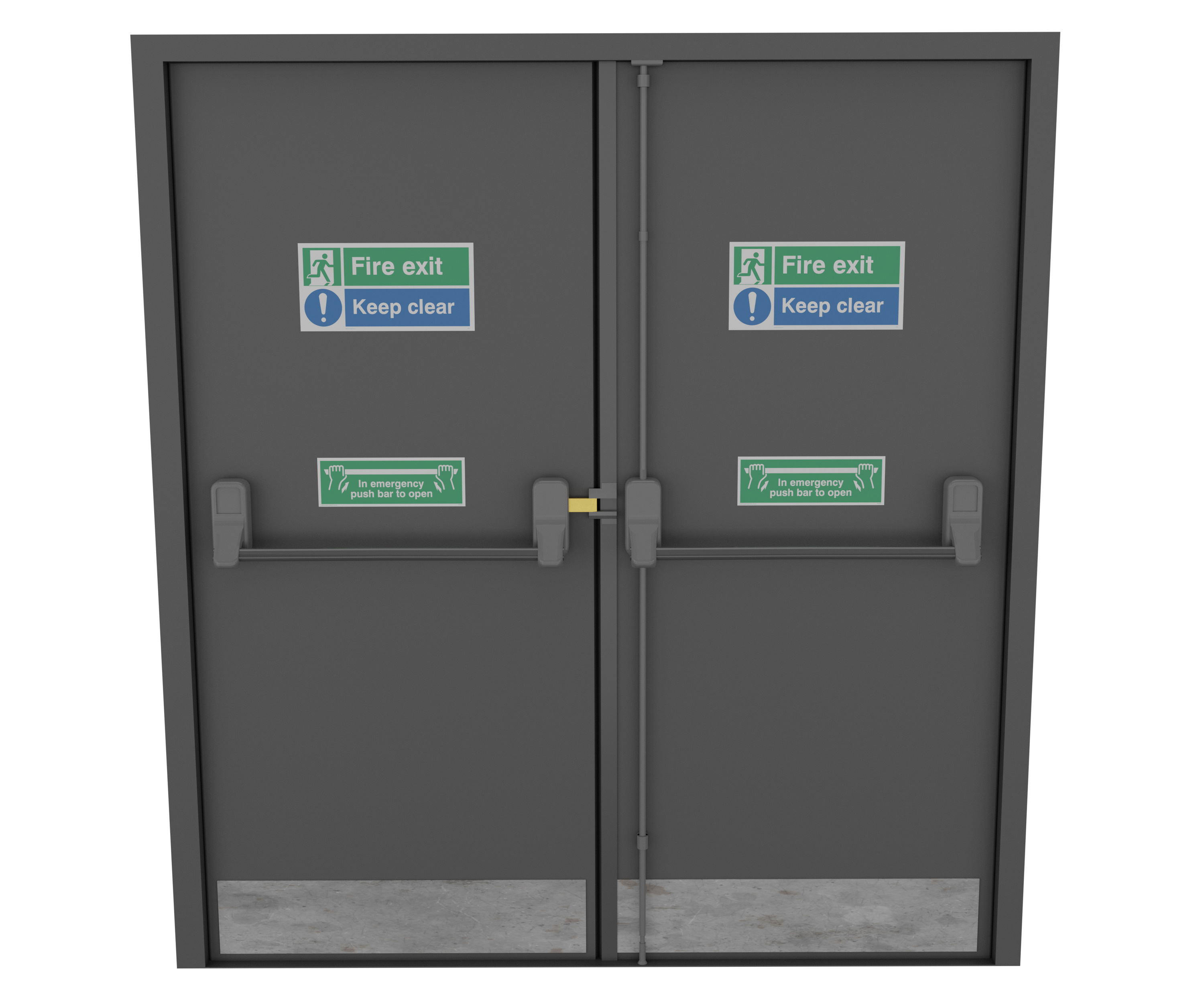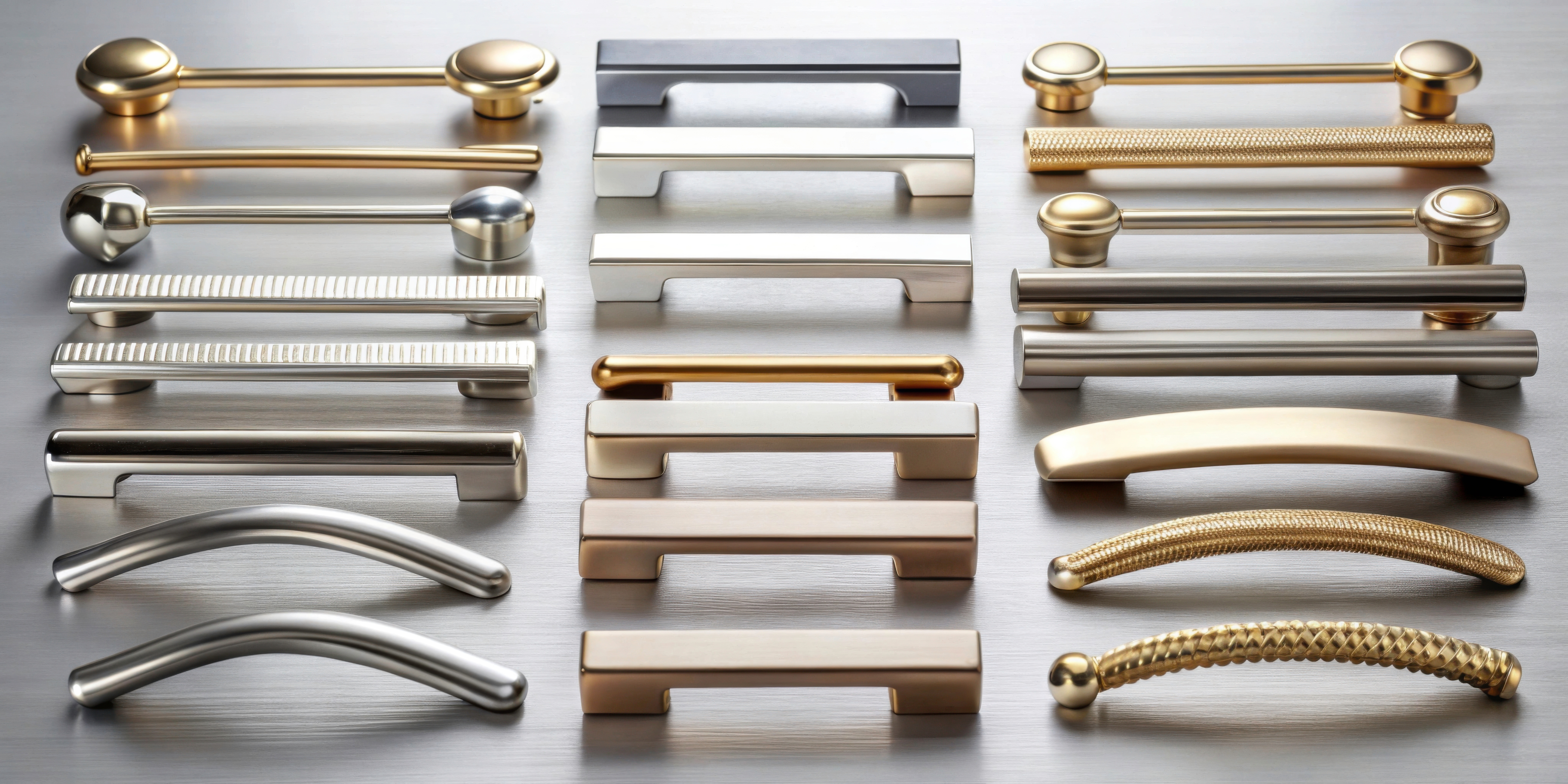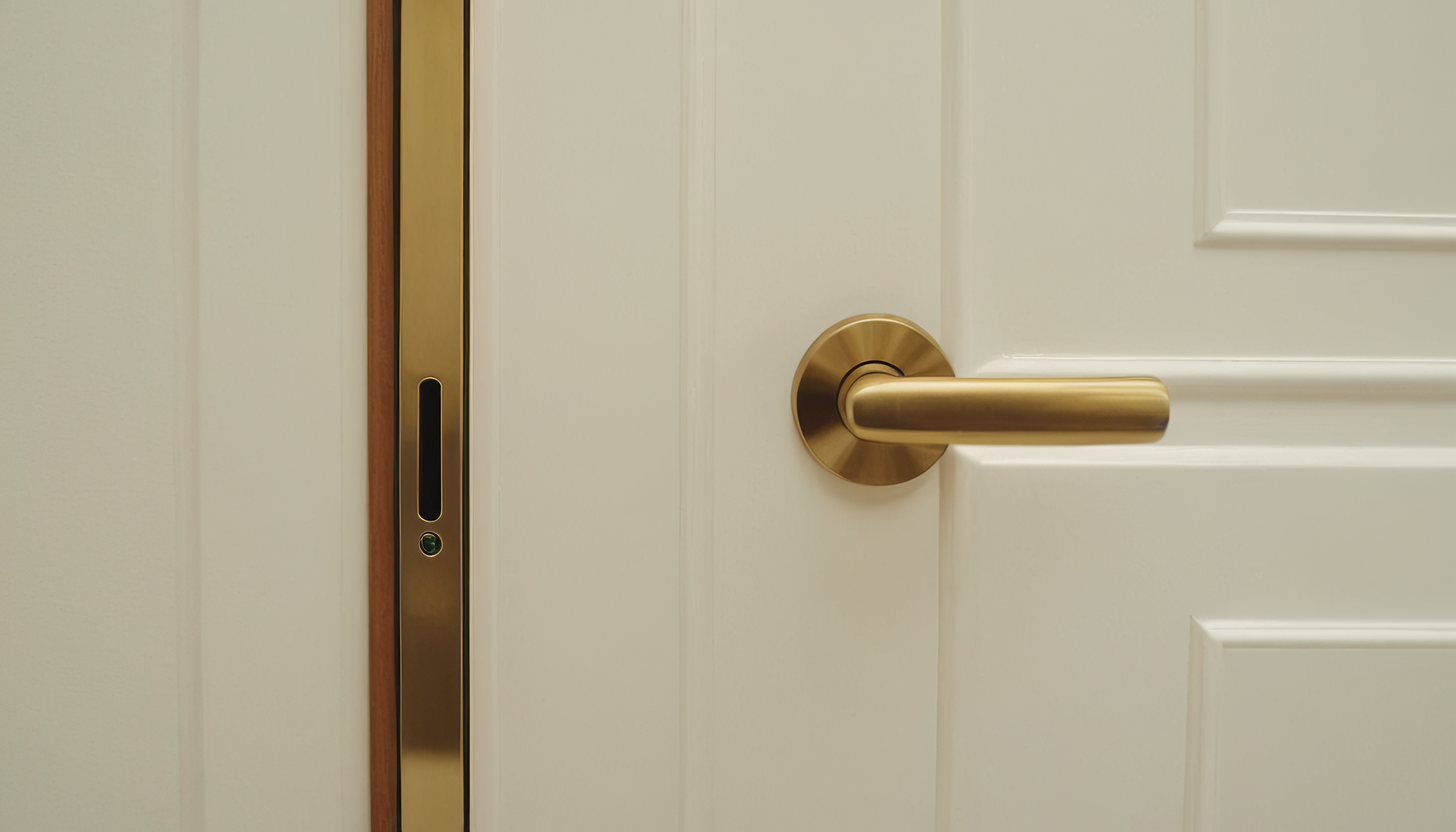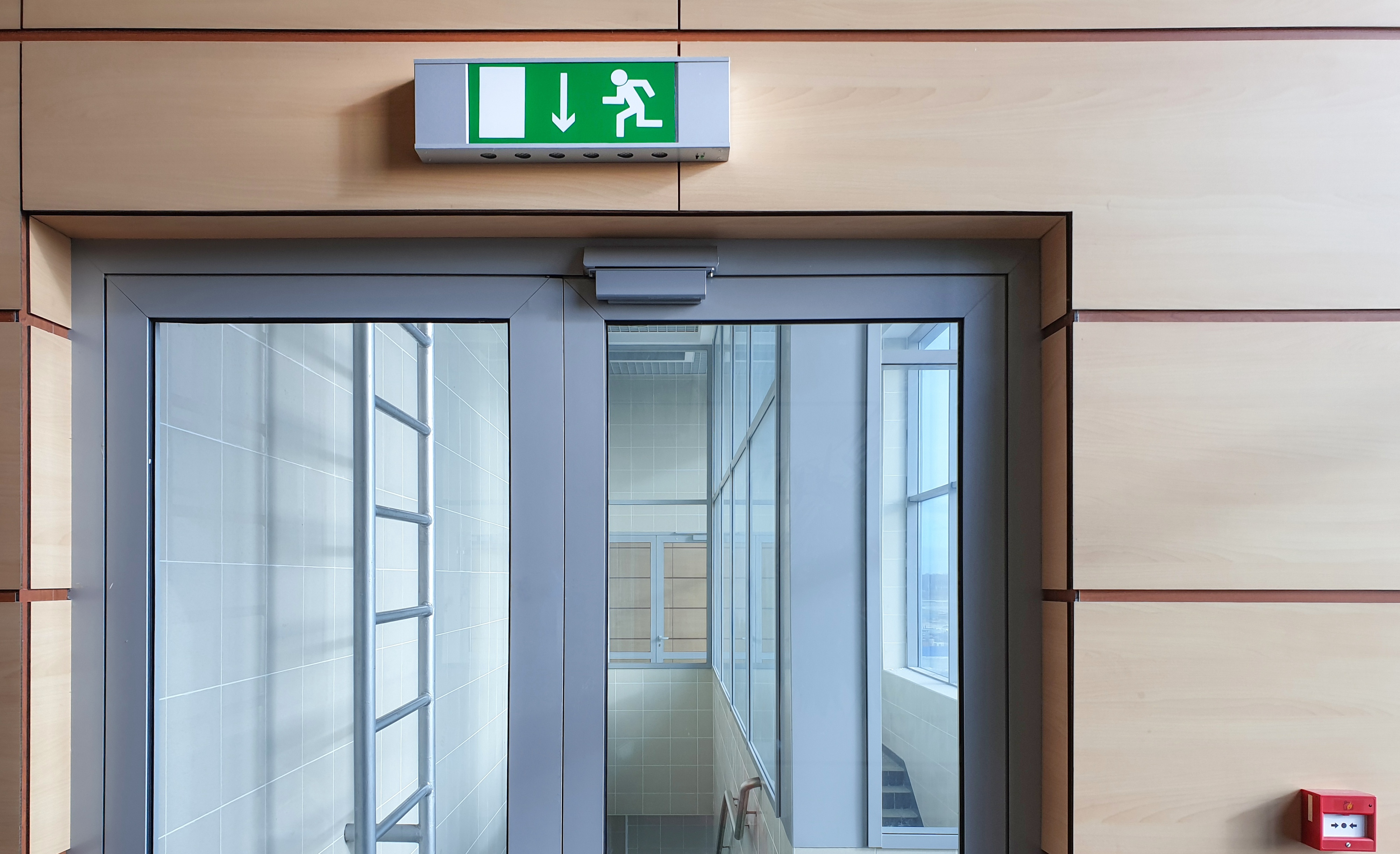
Door Hardware Regulations : A Comprehensive Guide for Installers
15 May 2025Fire doors are an integral part of any building’s fire safety strategy, they are designed to provide a safe escape route, while preventing the spread of fire and smoke. Ensuring that fire doors function as intended goes beyond installation, it's about using the right fire door hardware as well as adhering to strict regulations that govern how they are installed and maintained.
If you are an installer, understanding the particulars of fire door hardware regulations is essential to compliance with safety standards and legal requirements. In this comprehensive guide, we’ll explore the key fire door hardware components, the regulations that dictate their use, and best practices to ensure your installations meet their safety and legal obligations.
By the end of this article, you will have a clear understanding of how to select, install and maintain fire door hardware correctly, so that you can confidently deliver high-quality, compliant installations that protect lives and property.
Understanding Fire Door Regulations
In the UK, fire door regulations are governed by a combination of legal frameworks, standards and best practices, designed to protect both people and property. The primary regulation is the Building Regulations 2010, Part B (Fire Safety) which outlines requirements for fire doors in various types of buildings. This regulation ensured that fire doors are installed and maintained to prevent the spread of smoke and fire, to facilitate safe evacuation routes.
Fire doors must also comply with the Regulatory Reform Fire Safety Order 2005, which states that fire safety in non-domestic buildings is the responsibility of the building’s ‘responsible person’ who must ensure that fire doors are maintained in good working order.
BS 476 (Part 22) provides the framework for assessing the fire resistance of building materials, including doors. A fire door tested to BS 476 can offer resistance ranging from 30 minutes to over an hour.
The role of fire doors in passive fire protection is to act as a barrier to prevent fire from moving through the building, and limit damage to critical areas, to allow people more time to evacuate safely and give fire services a better chance of containing the fire.
Unlike systems such as sprinklers or alarms, fire doors work automatically without human interaction, as they remain closed at all times, typically due to a door closer mechanism.
Fire door regulations are influenced by a number of regulatory bodies and standards, to ensure safety and consistency. Here are some of the key authorities to be aware of:
- The British Standards Institution: BS EN 1634-1outlines the fire resistance and smoke control testing for door assemblies. This standard is essential for confirming that a fire door meets the safety requirements.
- The Fire Door Inspection Scheme: They provide guidance and certification for the inspection of fire doors, to ensure they are installed and maintained in compliance with UK safety laws.
- Department for Levelling Up, Housing and Communities: Formerly known as the Ministry of Housing, Communities and Local Government, they provide governmental guidelines and updates on fire safety legislation, particularly in the wake of events such as Grenfell.
- BS 476 Parts 20-22: This series of British Standards covers fire testing for various building materials, including doors. It is essential for assessing the fire resistance of doors and hardware.
By adhering to these regulations and standards, installers can ensure that fire doors function effectively, while meeting legal requirements to safeguard lives and property.
Key Fire Door Hardware Components
Fire door hardware plays a crucial role in maintaining the effectiveness of fire doors. Each component must comply with specific safety regulations to ensure that the door performs correctly in the event of a fire. Here are the fire door hardware components and the associated regulations:
- Locks and Latches: On fire doors, locks and latches must be fire resistant and compatible with the door’s certification. They should meet the requirements of BS EN 12209, which sets standards for mechanical locks and latches. Fire-rated locks and latches are designed to withstand high temperatures, and it is essential to choose products that have been tested with the specific fire door set. If you use uncertified hardware, this can void the door’s fire rating. They also should be fitted in a way that doesn’t weaken the structure of the door.
- Hinges: Fire door hinges must be robust and heat-resistant to ensure the door remains secure during a fire. Commonly, steel is the material used for fire door hinges, and they must be tested to meet the BS EN 1935 standard. Typically, a fire door requires minimum 3 hinges to distribute the weight of the door, and withstand forces during a fire. Intumescent hinge pads are often used within hinges and door frames, which expand when exposed to head, to maintain a tight seal.
- Panic Hardware: This includes push bars and emergency exit devices, and are essential for fire doors installed in public buildings and high traffic areas. This hardware must comply with BS EN 1125 for doors on escape routes where panic situations are likely to occur. For emergency exit doors where only trained personnel will be, BS EN 179 standards apply. Panic hardware needs to allow for q quick and easy escaped, without the use of keys or any special knowledge. It must be installed at the correct height, which is usually between 900mm and 1100mm from the floor, for accessibility.
- Seals: Seals prevent the passage of fire and smoke through gaps. There are 2 main types of seals used in fire doors, intumescent seals which expand when exposed to heat to form a barrier, and smoke seals which remain flexible and block smoke from leaking through gaps when closed. Seals must comply with BS 476 Part 31.1 for smoke control, and BS EN 1634-3 for fire resistance. Its essential to regularly inspect these seals to ensure they remain intact and functional.
Door closers: they ensure that the door automatically returns to the closed position after being opened. Door closers must comply with BS EN 1154 for controlled closing, and BS EN 1155 for electromagnetic hold-open devices. Hydraulic and concealed door closers are the most typical choices for fire doors. When you are selecting a door closer, ensure its compatible with the doors fire rating and correctly adjusted to provide adequate closing force. Closers should never be disconnected or wedged open, as this goes against the fire door’s purpose.
Key Regulations for Fire Door Installations
To ensure that fire doors function as intended, installers must adhere strictly to regulations regarding installation and certification. If non-compliant, the fire door can be rendered ineffective, putting lives and property at risk. Here are the essential regulations to follow during installation:
Fire doors are certified based on the duration they can withstand fire and smoke, typically classified as:
FD30 - provides 30mins of fire resistance
FD60 - provides 60mins of fire resistance
FD90 and FD120 - provides 90mins and 120mins of protection, although these are much less common installations.
These fire resistance ratings are tested according to BS 476 Part 22 or BS EN 1634-1, which evaluate the door’s performance under controlled fire conditions. For the certification to be valid, all components of the door such as hinges, locks, seals and closers must be compatible and tested as part of the same door set.
The installation requirements for fire doors vary depending on the building type, as specified in Building Regulations Part B:
Residential Buildings:
FD30 doors are typically used in domestic settings, such as between a house and garage.
Multi-occupancy buildings (e.g., flats) often require fire doors in escape routes.
Commercial Buildings:
FD60 doors are common in high-risk areas like kitchens or boiler rooms.
Doors must open in the direction of escape and be fitted with panic hardware where necessary.
Fire door hardware must be compatible with the door set to maintain fire resistance. Always check that hardware has the Certifire mark or equivalent. Use components that are specified as part of the tested assembly, and avoid mixing uncertified parts.
Proper installation is crucial to ensure the certification isn’t void. Always follow the manufacturer guidelines, use qualified installers, and ensure that the door closes properly and seals completely, so that the fire rating is not invalidated.
Fire Door Maintenance and Inspection
Regular maintenance and inspections are essential to ensure fire doors remain effective. Keeping them in good condition maintains their certification and also ensures compliance with fire safety regulations.
Maintaining fire doors involves routine checks to identify damage or defects, ensuring the door closes fully. It's important to inspect the intumescent and smoke seals, as any wear or damage can reduce the fire resistance. Hardware components such as hinges and locks should be checked regularly for signs of loosening, and door closers must be tested to confirm they are in good working order. Regularly cleaning and lubricating moving parts can help to maintain smooth operation.
Frequency of fire door inspection depends on both the building type, and its fire risk level. In residential or low risk buildings, annual inspections are sufficient. In high traffic or high risk settings such as hospitals or kitchens, inspections should be on either a quarterly or monthly basis. If a door is damaged, an immediate inspection is required to assess and rectify the issue.
During inspections, its common to find problems such as warped or damaged door leaves, which can compromise the seal. Hinges can become loose with wear, which affects the door stability, and door closers can also become worn over time. Gaps between the door and frame should not exceed 4mm, as larger gaps can significantly reduce the doors effectiveness.
To demonstrate compliance, accurate records of inspections and maintenance are required. These records should include dates of inspections, details of any issues, actions taken and any updates on certification or hardware replaced.
Common Mistakes to Avoid in Fire Door Installations
Here are some key mistakes to avoid when installing fire doors:
Incorrect hardware choices - Fire doors require certified components, including locks, hinges, closers and seals that have been tested as a part of the complete door set. Mixing hardware or using uncertified parts can invalidate a door’s fire rating, and make it ineffective during a fire. Ensure hardware always matches the door’s certification and fire rating, such as FD30 or FD60.
Poor installation - Even with the correct hardware, improper installation can negate the benefits of a fire door. A common installation mistake is incorrect hinge position, which can cause the door to not close properly, or warp. Failing to fit intumescent seals correctly also significantly reduced fire resistance. Also, poor alignment between the door and frame can create gaps that exceed 4mm, allowing smoke and fire to pass through. Another issue is incorrect fitting of door closers, which can result in the door not closing automatically. To ensure compliance, follow the manufacturers installation guides and use trained certified installers.
Ignoring Maintenance - Fire doors need ongoing maintenance to remain effective. Over time, door components can wear out, which compromises the door’s integrity. Without regular inspections, these issues may go unnoticed, leaving the building vulnerable.
By avoiding these common mistakes - choosing the right hardware, following proper installation practices, and committing to regular maintenance, installers can ensure that fire doors remain compliant and fully functional.
Best Practices for Installers
To ensure fire doors function effectively and comply with regulations, installers must follow best practices throughout selection, installation and maintenance. Compliance starts with understanding regulations, such as Building Regulations Part B, BS 476 and BS EN Standards. Using certified fire doors and hardware that meet these standards is essential. Before installation, carefully review manufacturer guidelines, and after fitting ensure that the door closes and seals properly. Keeping detailed records of installations and maintenance helps demonstrate compliance during inspections.
Working with trusted suppliers is also crucial. Choose reputable providers who can supply certified hardware tested as part of a complete fire rated door set. Look for recognised certifications, such as Certifire or the BSI Kitemark, to ensure quality and compliance. Building long-term relationships with reliable suppliers can guarantee consistent access to compliant products and expert support.
Training and continuous learning are essential for maintaining high standards. Fire safety regulations evolve, so it’s important to stay informed through regular training from recognised bodies like FDIS or BM TRADA Q-Mark. Attending industry workshops and seminars helps installers keep up with new standards and practices. Ongoing education not only enhances skills but also ensures that every installation meets current safety requirements.
By adhering to these best practices, installers can maintain high standards and ensure that fire doors consistently perform their crucial safety role.
Installing and maintaining fire doors correctly is essential for ensuring safety and meeting legal requirements. Throughout this guide, we’ve covered key aspects of fire door regulations, from selecting certified hardware to following best practices during installation and maintenance. By understanding the regulations and choosing compliant components, installers can significantly reduce the risk of fire spreading through a building.
Staying compliant is not just about meeting legal obligations, it’s about safeguarding lives. Regular inspections, thorough maintenance, and proper record-keeping ensure that fire doors continue to function as intended. Working with trusted suppliers and staying updated through training also plays a vital role in maintaining high safety standards.
To make informed decisions, always check for certifications like Certifire or the BSI Kitemark when purchasing fire door hardware. Referencing reliable resources and staying connected with professional bodies can help installers keep their knowledge current and their installations compliant.
By committing to these practices, installers can confidently provide effective fire protection, helping to ensure the safety of building occupants.
Looking for certified fire door hardware? Browse our selection now.
